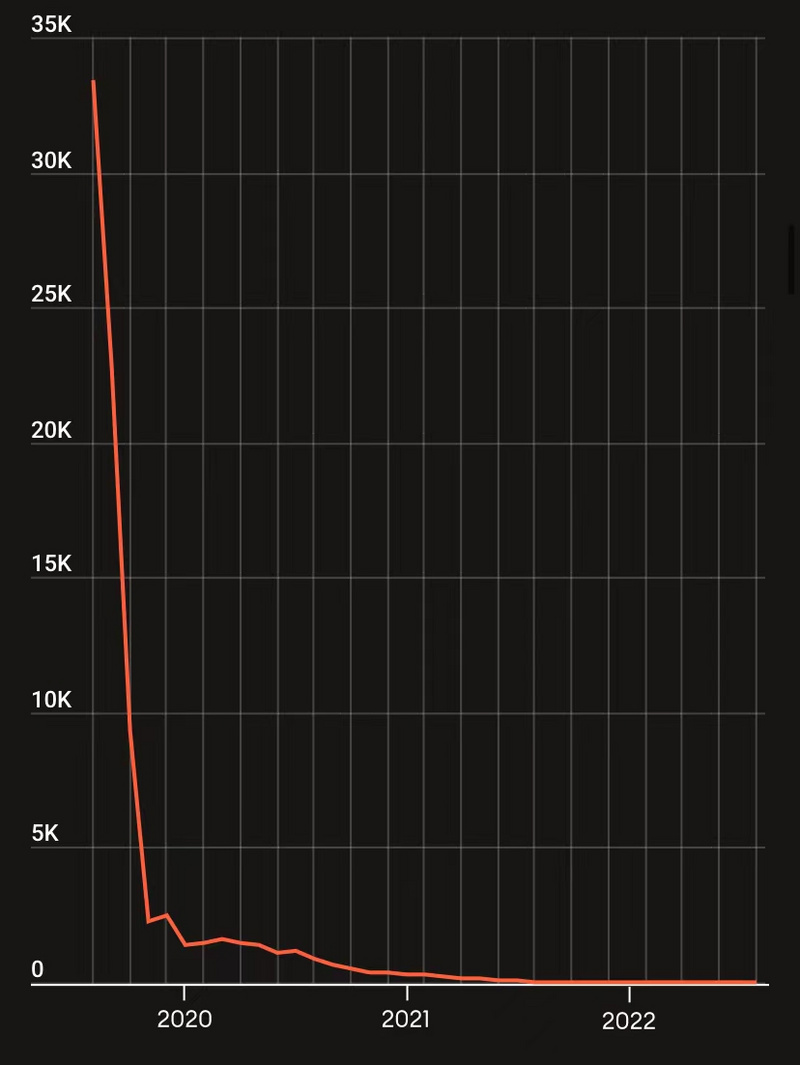Forbes Exposes Helium Insider Secrets: False Advertising, Tokenomics Struggles, Executive Embezzlement
Original title: "Crypto Darling Helium Promised A 'People's Network.' Instead, Its Executives Got Rich"
Original author: Alex Konrad, Forbes
Original compilation: Katie Koo, Odaily Planet Daily
Helium is touted as the best real-world use case for Web3 technologies. But as the project struggled to generate revenue, a Forbes investigation found that Helium executives and their friends had quietly hoarded most of their wealth since the project’s inception.
Helium, the $1.2 billion Web3 company with funding from a16z and Tiger Global, says it's building "People's Network," a wireless network for things like parking meters and dog collars. Global network of internet connections. All a user has to do is pay $500 for a machine that looks like a Wi-Fi router, plug it into the wall, and receive Helium’s cryptocurrency in return (a recurring passive income stream). One Helium investor claims that owners can get their money back on the purchase within weeks.
If demand for the Helium system rises, pushing up the value of its Helium Network Token (HNT), the company hints that the benefits of the network will be shared by all. But after being exposed by Forbes, he was severely "slapped in the face".
The establishment of Helium and internal bugs
In 2013, Napster co-founder Shawn Fanning and then-renowned game designer Haleem formed a startup called Skynet Phase 1, which referenced the genocidal computer systems featured in the Terminator movies. The company, which has since been renamed Helium Systems, claims to be creating wireless networks for the Internet of Things, one of the hottest areas for venture capital.
Building on Shawn Fanning's fame, Helium raised $15 million in 2014 from big-name investors including Khosla Ventures and Salesforce founder Marc Benioff. But after five years of failed product launches fueled by a $50 million investment, Helium turned to the booming crypto market, with the "User Network" unveiled in August 2019. (Shawn Fanning left the company before going live, according to three sources.)
At the same time, however, Helium discovered that its new system was full of cheaters. To artificially increase the rewards, some users purchase multiple hotspots, sometimes dozens, and manipulate their locations to make them appear scattered across a city or town when in reality they are all in one place. This creates a clear signal when machines authenticate each other, and therefore more tokens. Helium employees say this phenomenon is common.
Although the community now manages a blacklist of over 70,000 hotspots that may belong to cheaters, and Helium claims to have implemented anti-spoofing measures, internally employees are known to engage in this behavior , said three former Helium employees: "When you see customers doing this, you think, why don't I follow suit?"
Haleem says it has been focused on how to tackle spoofing, and nearly 12 months after its launch, Helium says its hotspots cover more than 1,000 cities in North America. Not long after, major crypto trading platforms Binance and FTX launched their tokens, allowing people to buy, trade and sell HNT. Over 100,000 hotspots online by July 2021, though HNT rewards are steadily declining. Like other cryptocurrency projects, Helium’s initial token offering is the largest, with more than 60 million HNT issued in its first year, a number that is halved every two years to protect the cryptocurrency’s value, according to project documents.
In August 2021, a16z led a token financing of USD 110 million, and the price of Helium’s token continued to rise until it reached USD 55 in November. At the time of the sale, three a16z partners wrote in a blog post that Haleem's dream of "creating a more connected world" had become a reality.
A New York Times article from February this year pretty much covered Helium as a Web3 success story. A few weeks later, Helium announced that it was valued at $1.2 billion after raising another $200 million. In February, Helium launched a new company called Nova Labs. "This is the fastest global wireless rollout ever," Haleem wrote in a blog post announcing the funding.
When Helium first launched, it created a special Token - Helium Security Tokens, or HST for short, which guaranteed that approximately one-third of Helium Tokens would be transferred to investors and company executives as backing Network Compensation. While users complain about their reduced rewards. CEO Haleem praised on Discord: "The fairest token distribution of any project I know so far."
Fruit and water don’t flow to the field of outsiders—the income flows to the pockets of a few insiders
During the first three months of the network, Helium hotspots earned the most tokens, when company insiders made up a large portion of the Helium mining community.

Helium exaggerates its partnership
In August, the U.S. city of San Jose decided not to renew a pilot project with Helium because it failed to subsidize internet costs for low-income households by mining HNT. The city purchased 20 hotspots last year, and the amount of HNT produced per miner has dropped. Clay Garner, chief innovation officer at the mayor's office, told Forbes: "Attributing the decline in generated HNT to a lack of network transmission data. San Jose can't afford projects that don't scale up significantly."
< br>
The company also appears to have exaggerated the nature of some of the partnerships. In July, Internet news blogs Mashable and The Verge accused Helium of exaggerating its ties to enterprise customer Salesforce and electric scooter-sharing company Lime. The two companies confirmed to Forbes that they do not use Helium, even though they are listed as customers on the company's website (Helium has already removed Salesforce and Lime from its website).
John Stark, a former SEC official who headed the agency's Office of Internet Enforcement, said: "Helium's apparent exaggeration of these commercial partnerships, coupled with revenue reliant on entry fees rather than actual use of its network, May attract regulatory scrutiny.”
Three years after the blockchain debuted, Helium users appear to be growing increasingly frustrated with the company's failure to deliver on its promises. In addition to complaining about low pay, community members have reported waiting a year for hotspots. Some players claim that random variables negatively affect their rewards once their hardware equipment arrives. "I realize it's going to take a lot of years to break even," Canadian Hotspot owner Jonathan Newman told Forbes. Eight months later, Jonathan Newman's "hot spot" is finally here and on track to make around $150 a year, a far cry from what he was pitched in the first place.
Summary
With low network usage, a disgruntled community and falling cryptocurrency prices, Helium is now trying to grow its community on a brand new network. (Odaily Planet Daily Note: On September 22, Helium’s proposal to migrate the network to Solana was voted through.)
The company says its next move is to build the Helium 5G network, which will provide decentralized connectivity for the latest version of cellular devices. These include partnerships with DISH and T-Mobile, two of the largest wireless carriers in the United States. Helium will pay the latter for access to its network. Last month, the company announced the launch of a new Token MOBILE to reward hotspot owners for building its 5G ecosystem. Crypto enthusiasts are currently required to participate in the network by purchasing an upgraded hotspot that costs $1,000 to $2,600.
Original link
Welcome to join the official BlockBeats community:
Telegram Subscription Group: https://t.me/theblockbeats
Telegram Discussion Group: https://t.me/BlockBeats_App
Official Twitter Account: https://twitter.com/BlockBeatsAsia


 Forum
Forum Finance
Finance
 Specials
Specials
 On-chain Eco
On-chain Eco
 Entry
Entry
 Podcasts
Podcasts
 Activities
Activities
 OPRR
OPRR









